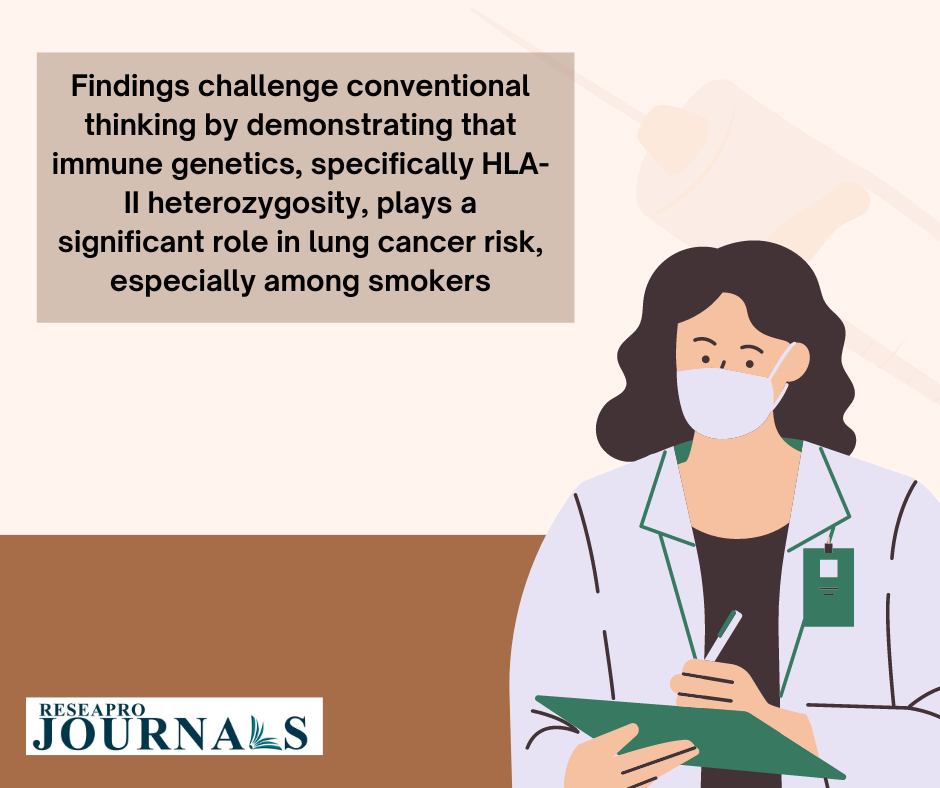
Traditionally, HLA-II genes were primarily associated with the body’s immune response to infections by presenting foreign antigens to T cells. This study suggests their role might extend to influencing cancer risk, particularly lung cancer, which is a major departure from the established view.

HLA-II Heterozygosity and Smokers:
The finding that the protective effect of HLA-II heterozygosity is amplified among smokers adds another layer of complexity. This suggests a potential interaction between genetic predisposition and environmental exposure, in this case, smoking. While the exact mechanism remains unclear, it raises exciting possibilities for understanding how genes and lifestyle factors interact in disease development.
Implications and Future Directions:
- Personalized Risk Assessment: This research could pave the way for personalized approaches to lung cancer risk assessment, considering both individual genetic profiles and environmental factors like smoking history.
- Novel Therapies: Understanding the mechanisms behind this interaction might lead to the development of new immune-based therapies targeting specific genetic profiles in lung cancer patients.
- Further Research: As mentioned earlier, confirming and validating these findings in larger, diverse populations is crucial. Additionally, understanding the underlying biological mechanisms behind this potential link between HLA-II heterozygosity, lung cancer risk, and smoking is essential for developing effective interventions.
I encourage you to explore the specific study further and stay updated on ongoing research in this area. Additionally, it’s always recommended to consult a healthcare professional for personalized advice about your risk factors and preventive measures.
